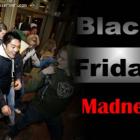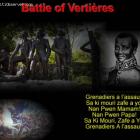ADVERTISEMENT
Haiti
Marchand Dessalines, Haiti
Haiti took its freedom and became The First Free-Black Country in the world in 1804. As its capital, Dessalines became the First Black Capital of the world. Undoubtedly named for Haitian revolutionary and first ruler of the independent state, Jean-Jacques Dessalines, the town is today home to just a few hundred thousand people.
So unfrequented it is called one of Haiti's hidden treasures, Marchand Dessalines has been overlooked as a historical site with benefit to the tourism industry though inclusion in the 'Experience It' brand would be easy for the well maintained site that still boasts its buildings and fortifications that are well preserved.
Maissade, municipality in the Hinche Arrondissement
Maïssade, with the Creole name, Mayisad is a municipality in the Centre Department's Hinche Arrondissement. The small town, with only 43, 000 plus inhabitants can be found at coordinates 190 10' 0'' N and 720 8' 0'' W, lying near to other towns and cities such as Fort D'Piquant, Nan Maye and Cajou Brule.
As a municipality, Maïssade is a little city with some autonomy. As such, they started a watershed project in the area known as the Maïssade Integrated Watershed Management Project. The venture was put in place by the Save the Children Federation and was implemented to successfully plan the sustained use of a resource that is sometimes hard to find in Maïssade's general location.
Liancourt in Artibonite
Set in the countryside of Haiti, Liancourt presents as a level site on the fringe of more populous towns and cities. It sits in the Artibonite region of Haiti and can be found 190 North and 720 West.
In the past, those who grew up in Liancourt left its sleepy country life for the faster paced cities where jobs were to be found in more abundance and variety than what is offered in their village. However, since the 2010 earthquake, which destroyed the homes, work places and livelihoods of many, scores have flooded back to Liancourt from places like Port-au-Prince to try to find a new place in the world.
Haiti, if only you had a chance, Le Diner en Blanc
Haiti will not die. Haiti can not die. I refuse to accept that we will succeed in our ongoing suicidal attempts. Please watch the official "Le Dîner en Blanc" of 2013 in Haiti.
This is Haiti with all its children enjoying the beauty of the land.
This video is very uplifting this week, specially after watching the nasty side of the country. I had to find something like this to show to everyone after Petion was supposedly in opposition with Dessalines in the streets of Port-au-Prince.
Leogane, Haiti
240 years after its destruction by a massive earthquake, the town Léogâne, perched on the seaside in Haiti's Ouest Department, suffered a similar fate at the hands of another, the 2010 earthquake that left its footprint all over Haiti, but, probably most distinctly, on the little town by the sea. While it certainly wasn't the only place affected by the behemoth quake, it suffered catastrophic damage estimated to be somewhere between 80% and 90% to the buildings in the small town, due its being at the epicenter of the massive quake.
When the earth stopped shaking on that January morning, none of the government buildings in the town were still standing, and the damage to all other property was so extensive, the U.N. declared it the worst hit area of three towns near Haiti's capital. Subsequently, a telecommunications company's building was enlisted to house an impromptu city hall, through which disaster response could be meted out to those in need, including the decimation of information about those places reported affected and the scope of the damage.
Cosmetic Makeover of Jalousie Hides Misery of Residents' Lives
The citizens of Jalousie are frustrated by a government of Haiti (GOH) project that is ignoring the real problems the community faces: no water or sanitation, and a secondary fault the area sits on.
Instead, the GOH is spending $6 million USD, some of it to paint Jalousie houses in pretty colors. The efforts to turn the slum into "a fashionable suburb" are to give hotel guests facing it a pleasing view. The first phase of the project has been completed just in time for the launching of two luxury hotels, Best Western and Royal Oasis.
Kenscoff In Haiti
Kenscoff is located in the Ouest Department in Port-au-prince Arrondissement in Haiti. It has around 4000 inhabitants. It is situated ten kilometers southeast of the capital of Haiti, Port-au-Prince. Grand Fond, Belle Fontaine, Touraine, Sourcailles and Bongaille are the five sections Kenscoff municipality is divided into.
Climate
Kenscoff lies within the coordinates 72° 17' 13" West and 18° 27' 2" North. It is located at a height of 1500 meters. Average temperature of this place is lesser when compared to the climate at Port-au-Prince, the capital of Haiti.
It is quite cold during the winter months and wearing a jacket or a sweater, becomes necessary. The temperature ranges between 26 to14 degrees centigrade. The coldest months are December, January and February.
Don't you just get sick and tired about the usual pictures on Haiti on TV
I am getting sick and tired about the usual pictures that I see on TV, Newspaper, Youtube, and other medias whenever the Haiti subject comes up.
This is what I see for the most part: " We are doing a fundraising to buy shoes for Haitian children". "Donate so we can help the people of Haiti". "Fundraising to bring drinking water to Haiti". "Haiti the poorest nation in the western hemisphere".
Has this become a business?
Please don't take me wrong. There are real issues in Haiti. According to the latest study, some two-thirds of all Haitians are hungry. About 1.5 million Haitians face "severe" or "acute food insecurity.
La Gonave Government in Talks to Develop Island for Tourist Trade
Gonâve Island lies on the Caribbean Sea, in the Gulf of Gonâve, to the west and northwest of Port-au-Prince. It is in the La Gonâve Arrondissement, part of Ouest Department. Because the island's topography is composed mainly of limestone, it lacks sufficient vegetation, and low levels of annual rainfall bring on water shortages. La Gonâve Arrondissement is comprised of two districts, Anse-à-Galets and Pointe-à-Raquette. It has a large population of 80,000 inhabitants.
Gonâve's biggest challenge is the scarceness of its water supply. In 2005, a crisis arose when the island experienced a severe drought, bringing many aid agencies to its rescue, sealing springs and erecting rainwater tanks. They have also installed an island-wide water-transport system and dug wells to deliver water to the drought-stricken islanders. A consortium of government, non-government and non-profit organizations, churches, and other aid organizations have established the Water Platform. This body coordinates the efforts of all agencies working on Gonâve to further their work. Within two years of the drought crisis, 25 wells had been dug and more were planned.
Wharf Jeremie Project to Revitalize Cite Soleil
The latest reconstruction project to rejuvenate Haiti's infrastructure is the Wharf of Jérémie Project, to be built in Cité Soleil. It will be, primarily, a commercial port serving the inter-regional and coastal areas of the Caribbean. The supporting infrastructure would house the new offices of the Port Authority, a vocational training center, public plaza, beach resort, and market.
In attendance at the ground-breaking ceremonies were President Martelly, government ministers, and Cité Soleil and Port-au-Prince mayors.
Martelly admitted Cité Soleil has been ignored by the government of Haiti (GOH), to the detriment of its development. He was referring to Parliament, of course, and not himself as part of Cité Soleil's problems. He invoked resounding declarations like, "I am listening to you!", and "I am at your disposal!"
Our objective is to share with you news and information about Haiti and the people of Haiti. Traditions, habits and the way we were or grew are alive in this site. We highly recommend that you Subscribe to our Newsletter and also share with us some of the things that are memorable and made us unique people.

 Haitians are a Proud People
Haitians are a Proud People  Newsletter
Newsletter  Black Friday Shopping Season
Black Friday Shopping Season  Informative Marketing and Advertising in the Haitian Community
Informative Marketing and Advertising in the Haitian Community  Battle of Vertieres
Battle of Vertieres